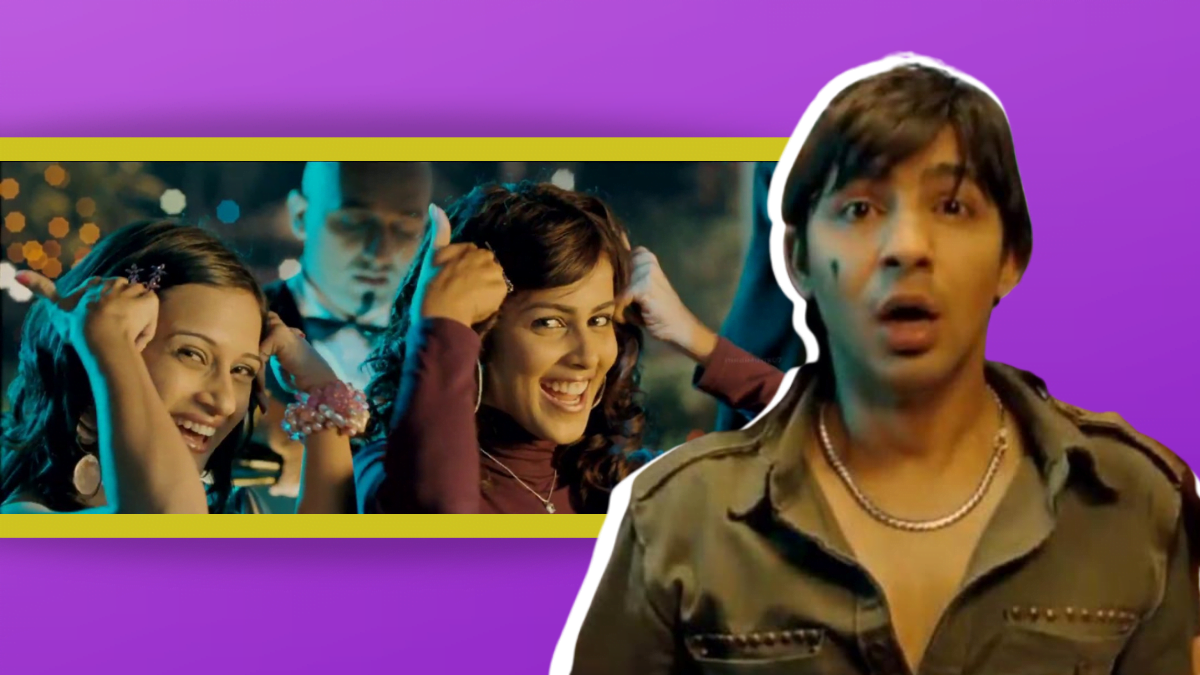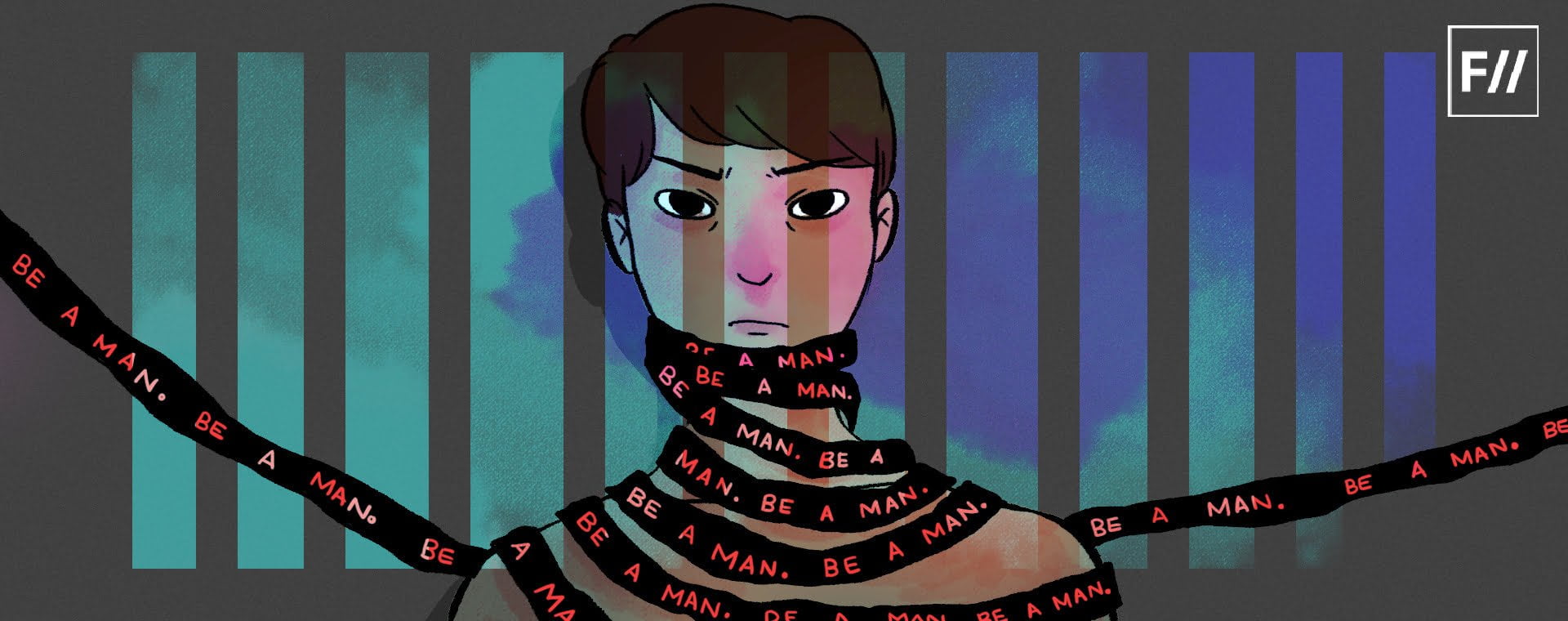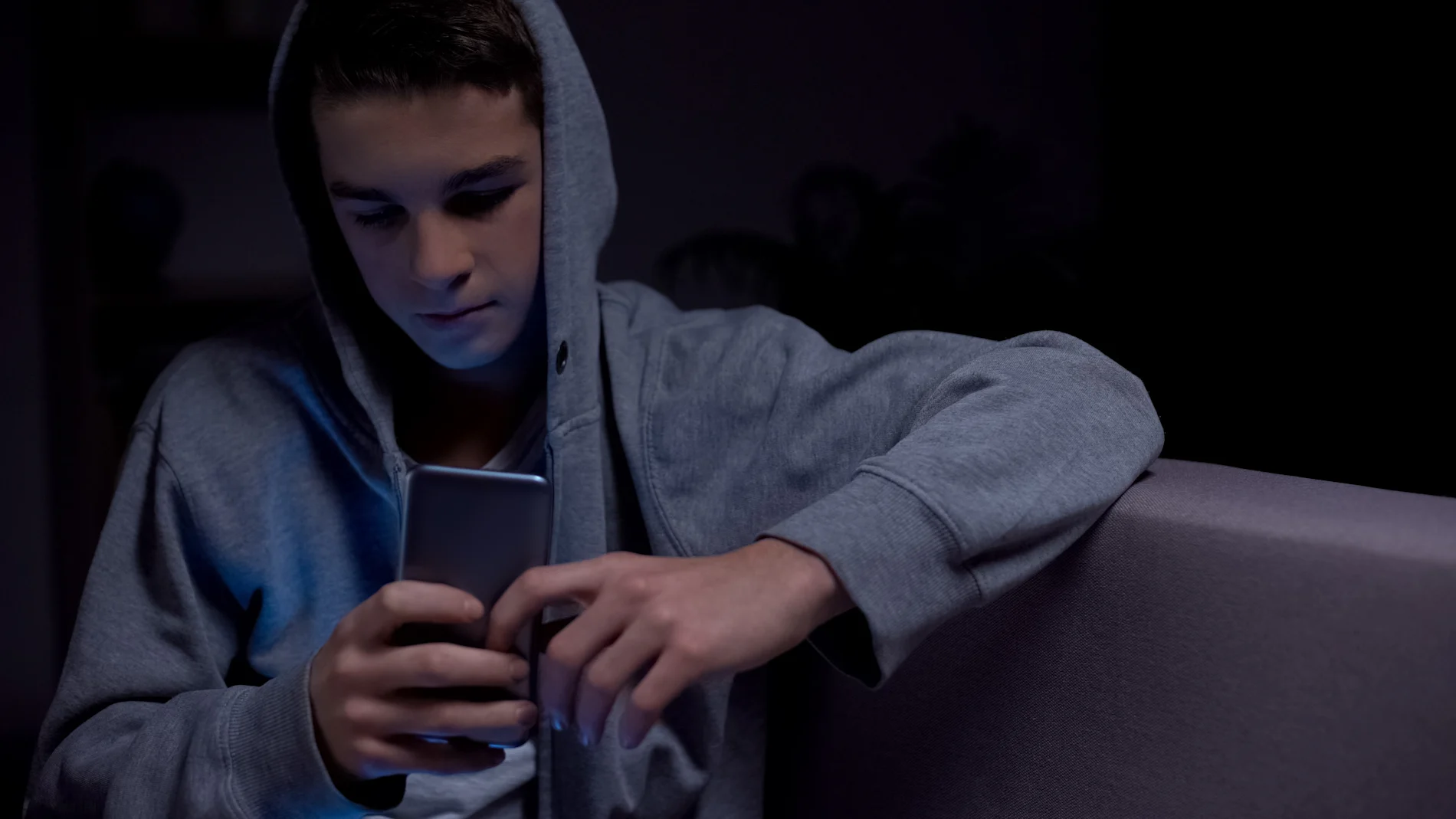The film Jaane Tu…Ya Jaane Na was released in 2008, and with it came the song Pappu Can’t Dance Saala, instantly gaining popularity in the country – so much so that it led to another film being named Pappu Can’t Dance Saala in 2010. The song that became part of the ‘party culture’ and was played in clubs and at various social gatherings, also attempts to redefine ‘desirable’ masculinity.
Song sequences occupy a significant position in commercial Hindi cinema, whether for acting as tools of promotion, popularising the film prior to its release, moving the narrative arc forward, or simply for a bonus ‘dance number’. An essential part of these song sequences has been their picturisation where the characters engage in dance routines as part of what Ravi Vasudevan calls “performing the narrative”. Although Hindi cinema has been witnessing heroes dancing as part of these performances, Ajay Gehlawat writes about the transformation from badly-dancing male stars to male stars dancing using complicated steps, and the focus shifting to the sculpted male body.
While male protagonists have also begun to appear in ‘item songs’, a space previously reserved for females, dancing as a field of interest, especially as a profession, is still considered effeminate. Joseph Pleck discusses the heterosexual-homosexual dichotomy as a symbol for rankings of masculinity, considering dance as a factor. The association of violence with heterosexual normative masculinity creates a binary which links non-violence to a transgression of this norm, and further to homosexuality.
In the film Jaane Tu…Ya Jaane Na, Aditi, the female protagonist, scribbles “I’m Gay” on the male protagonist, Jai’s arm, as a joke due to his pacifist nature. As Pleck exemplifies, the physical flexibility achieved through dance is also taken as a marker of ‘looseness’ and thus homosexuality. Pappu Can’t Dance however, attempts to rearticulate this narrative of dance as a rejection of hegemonic masculinity.
In the film Jaane Tu…Ya Jaane Na, Aditi, the female protagonist, scribbles “I’m Gay” on the male protagonist, Jai’s arm, as a joke due to his pacifist nature. As Pleck exemplifies, the physical flexibility achieved through dance is also taken as a marker of ‘looseness’ and thus homosexuality. Pappu Can’t Dance however, attempts to rearticulate this narrative of dance as a rejection of hegemonic masculinity. While the song addresses the hegemonic narrative of masculinity, it attempts to reinscribe the ‘desirable’. It also acts as a narrative device that leads to the formation of the first heterosexual couple out of the group of friends in focus.

Aditi’s parents, Peachy and Pumpkin, organise a graduation party for Aditi’s college mates. During the party, Jai asks Aditi to dance, with Aditi informing him that she cannot dance. Jai brushes her excuses aside, telling her, “Only Pappu can’t dance,” thus setting up the premise for the song. The lyrics of the song are essential for this analysis. ‘Pappu’ is designed to be a subject position which is occupied by different characters throughout the song.
In the beginning of the song, the character deemed ‘Pappu’ is Vivek, the group’s college-mate. ‘Pappu’ is described as muscular, popular, immensely wealthy, possessing blue eyes, and resembling a foreigner. He is a qualified business graduate, a charismatic bachelor who drives fast cars and vacations in France. He possesses several qualities that qualify him as an ‘eligible bachelor’, or someone fitting almost perfectly into the mould of the desirable normative masculinity. However, he cannot dance.
Despite his traits which inscribe him as a near-perfect specimen of masculinity, he is rejected due to his failure to dance. Employing an essential trope of the Hindi films, the film then subverts its use. Previously, song sequences have been appropriated as another tool to propagate set ideas about normative masculinities. Songs like Ek Pal Ka Jeena (Kaho Na…Pyaar Hai), It’s Magic (Koi Mil Gaya), Dard-e-Disco (Om Shanti Om), and Dhoom Machale (Dhoom) amongst others, which have had male characters as central, have either reiterated a similar hegemonic masculinity or have shifted their focus to the male body. This male body also serves an extra-diegetic function, since the actors playing such roles need to maintain the ‘sculpted’ bodies off camera as well. The song Pappu however, attempts to transgress these ideals.
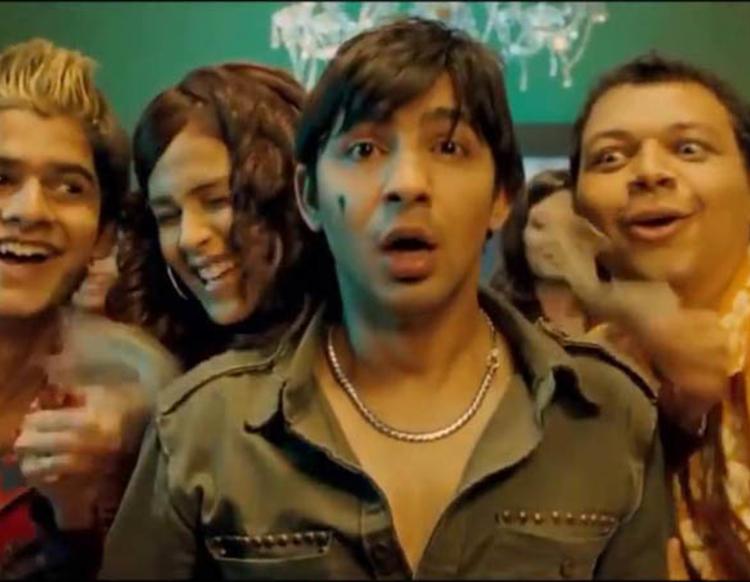
While previous Hindi songs have portrayed the male protagonists as a ‘master of all he does’, Pappu questions such ideals by portraying its ‘heroes’ as flawed, by not succumbing to the ideals. The focus is shifted from the male body; the characters lip-sync the song incorrectly, not only disturbing the previous claims of heroic ideals, but also reminding the audience that the song is a para-narrative element and is not sung by the characters but pre-recorded by professional musicians.
The song also employs the use of a pejorative term, usually employed as a swear word in Hindi. The word ‘saala’ is repeated in the chorus, almost mocking the subject position of ‘Pappu’ who stands for the hegemonically masculine.
The dancers in the background as well give us an impression of being young college students as opposed to professional dancers hired for the song sequence. The song also employs the use of a pejorative term, usually employed as a swear word in Hindi. The word ‘saala’ is repeated in the chorus, almost mocking the subject position of ‘Pappu’ who stands for the hegemonically masculine. The choreography of the song includes a number of people coming and performing in pairs or small groups, with Indian classical and folk dance steps fused with western styles of dancing.
However, they are all waved off the stage by Jai and Aditi, since none of them are ‘good enough’. It is then Jai, the character attempting to inflect the narrative of masculinity, who knows how to dance well. He is not the normatively masculine protagonist, but he dances, while the hegemonically masculine character, Vivek, occupying the subject position of ‘Pappu’, is rendered clueless in the song as he is pushed around, dressed up and made to act as an infant by his peers.
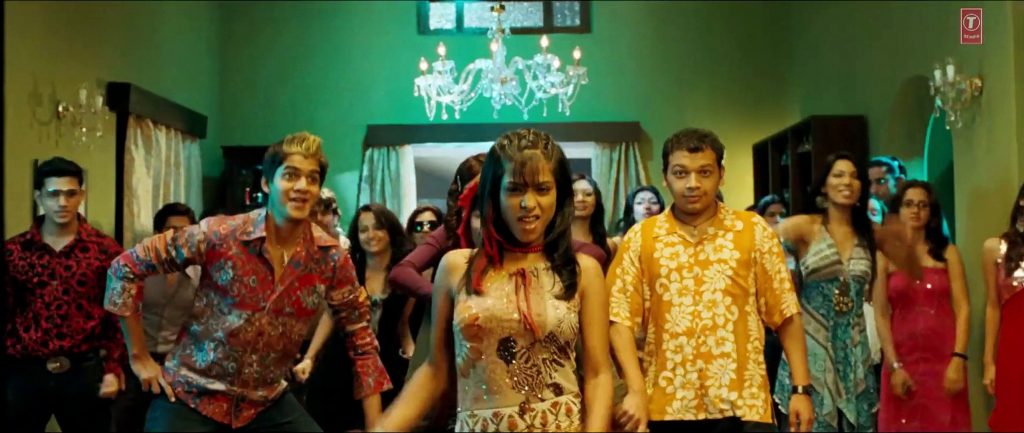
Dance then is rearticulated as a desirable association to masculinity. The song disturbs the notion of a permanent hegemonic masculinity, disrupting its narrative of the older masculinities and attempting to replace the centre with a new one. A little after halfway through the song, ‘Pappu’, here Vivek, dances successfully and impresses everyone, thus being remodelled to fit into the new imaginary of masculinity.
Also read: Deconstructing Men And Masculinity Through The Lens Of Satyajit Ray
Since Vivek’s narrative is foreclosed, another character occupies the subject position of ‘Pappu’ – Nilesh. Comparatively smaller in physique, Nilesh is introduced in the beginning as Vivek’s friend in college. During the song, Nilesh begins to play a guitar as the lyrics appropriate lines from another popular Hindi graduation song, Papa Kehte Hain from the Amir Khan-starrer, Qayamat Se Qayamat Tak (1988). Nilesh dresses up in clothes similar to those of Raj as well when he occupies the subject position of ‘Pappu’.
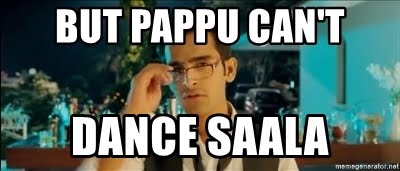
The original lyrics, “Papa kehte hain bada naam karega, beta humara aisa kaam karega” (Father says he’ll make us proud, our son will achieve such merit) are slightly changed to “Papa kehte hain bada naam karega, mera Pappu toh aisa kaam karega” (Father says he’ll make us proud, my Pappu will achieve such merit). The song Papa Kehte Hain talks about a father’s aspirations for his son to achieve something in life. It falls back into the narrative of a man being a provider who strives to prove himself and make his father proud. The patriarchal objective is thus fulfilled and a new patriarchal head is established, assuring the continuation of the order.
Pappu, however, attempts to subvert this narrative, re-citing masculinity by reciting lyrics from an older song. After the intertextual song reference, the shot cuts back to the students dancing and singing, reiterating the fact that despite all of his achievements, ‘Pappu’ still cannot dance. The song can then be understood as questioning the hegemonic masculinity which creates an ideal to be fulfilled. The song hints at the fact that these ideals are constantly changing, and can never truly be realised. The centre of the narrative is repeatedly replaced by a new centre which proclaims a different set of diktats to be followed.
The song can then be understood as questioning the hegemonic masculinity which creates an ideal to be fulfilled. The song hints at the fact that these ideals are constantly changing, and can never truly be realised. The centre of the narrative is repeatedly replaced by a new centre which proclaims a different set of diktats to be followed.
Judith Gardiner observes, “Although dominant or hegemonic forms of masculinity work constantly to maintain an appearance of permanence, stability, and naturalness, the numerous masculinities in every society are contingent, fluid, socially and historically constructed, changeable and constantly changing, variously institutionalized, and recreated through media representations and individual and collective performances.”
The permanence of this normative narrative of masculinity is then questioned by Pappu, while it simultaneously attempts to reinstate another discourse as hegemonic. Nilesh’s narrative does not receive any closure; he is unable to fulfil his objective of ‘winning the girl’ due to his inability to play the guitar and dance. This can once again be understood as the need to fall back upon the requirements of the hegemonic order, old or new, and fulfil them, in order to gratify the narrative.
The song also imagines a possibility for queer desire through the character of Shaleen, but a queer narrative seems difficult to be included within the heteronormative patriarchal structure as yet, it can be imagined on the peripheries of an evolving nation. The couple that is formed at the end of the song is heterosexual. Rotlu and Bombs get together after the song culminates, fulfilling the narrative function of the song and moving the plot forward by clearing the hindrances in Jai and Aditi’s romance; Rotlu and Bombs previously display romantic interest in Aditi and Jai respectively.
The film thus can be said to succeed in its attempts to contest and subvert the traces from previous hegemonic masculinities. Interestingly, the song begins with the DJ proclaiming, “This is the future, man!”, arguably locating itself as a precursor to many such contestations to follow which might be allowed to further recenter the narrative.
Also read: The Constant Erasure Of Female Masculinity & Why It Keeps Happening
Vidhi Mehra is an Assistant Professor of English Literature, and a theatre facilitator based in Mumbai. She works with adolescents and adults through the medium of drama. She has a keen interest in cinema and theatre, and the performance of gender. She completed her Masters in Literature from the University of Mumbai with a research thesis on Hindi Cinema and Masculinity Studies. She has conducted several workshops based on Shakespeare’s works and has also performed and directed scenes from various plays of Shakespeare. You can find her on Instagram.
Featured Image Source: Feminism In India
